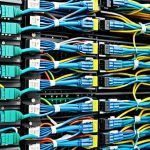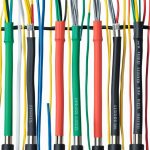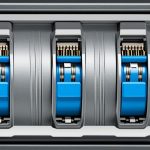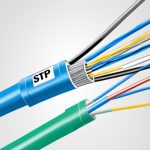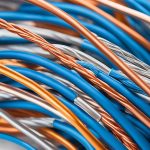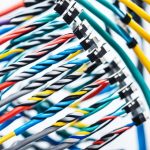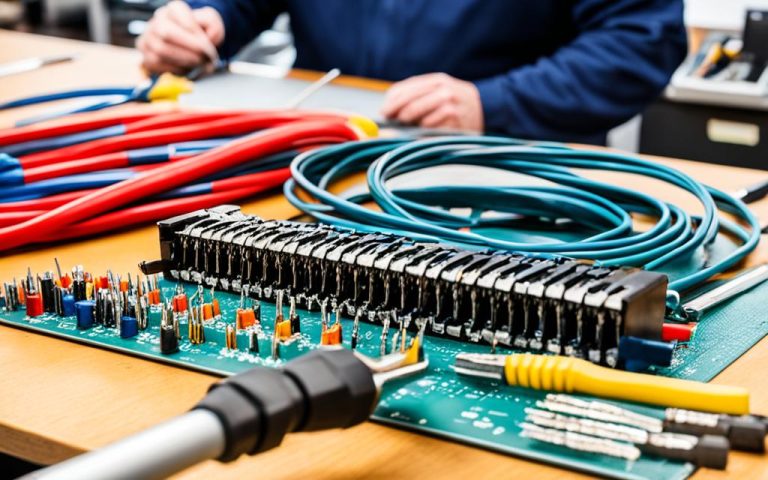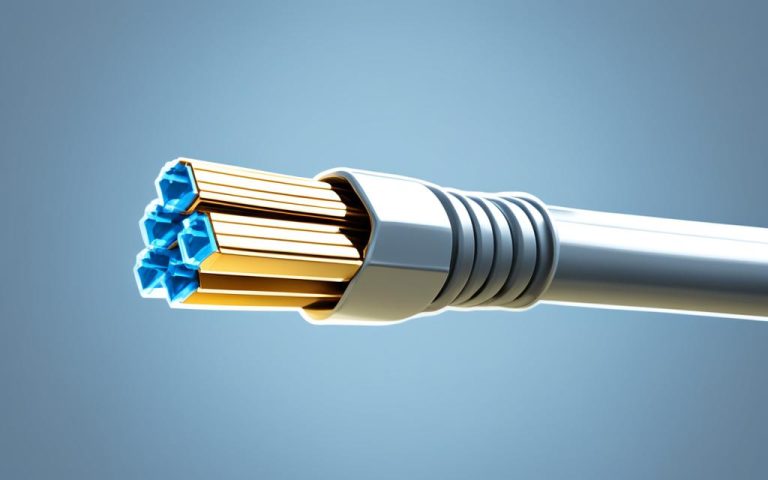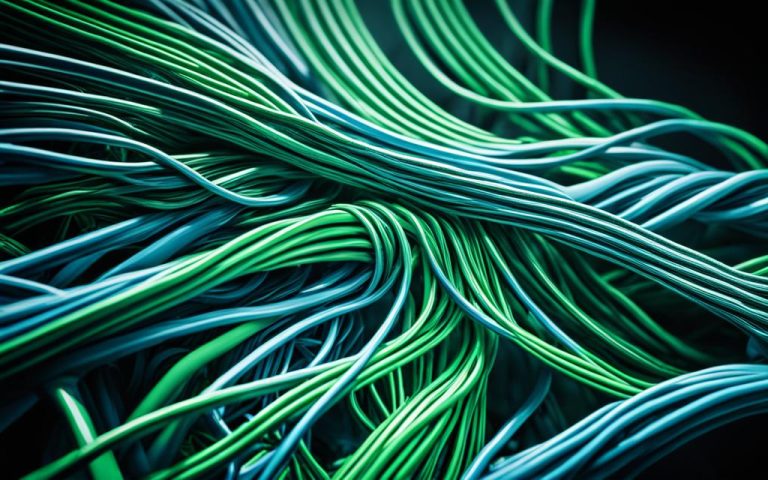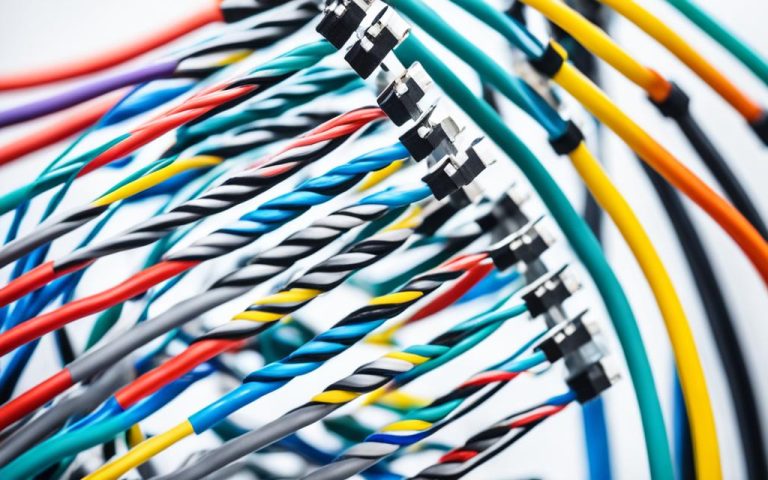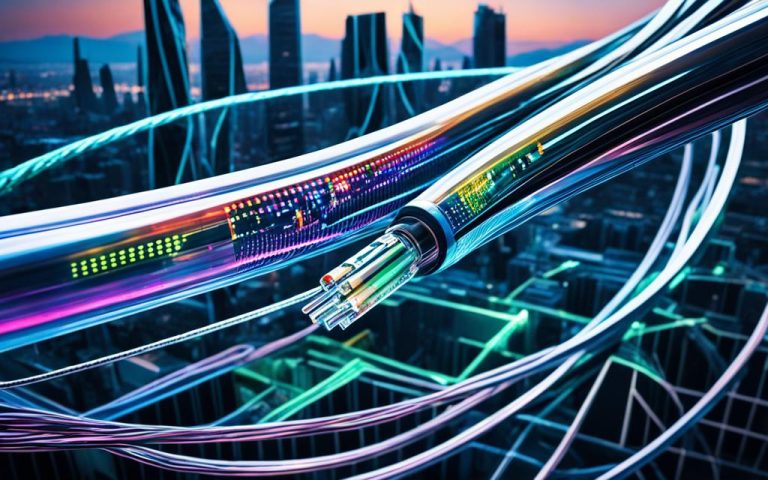Twisted pair cables are an essential component in the field of multimedia applications. They provide a reliable and efficient solution for transmitting audio, video, and data signals. With their unique design and ability to reduce electromagnetic interference, twisted pair cables are widely used in various industries.
In this article, we will explore the uses of twisted pair cables in multimedia applications, their different categories, and their advantages over other cable types. Whether you’re setting up a LAN, Ethernet network, telephone line, or security camera system, understanding the benefits of twisted pair cables will enhance your connectivity and performance.
What is a Twisted Pair Cable?
A twisted pair cable is a fundamental component of modern multimedia systems. It is composed of pairs of insulated copper wires that are twisted together to form a reliable and efficient transmission medium. One wire within the pair carries the signal, while the other wire serves as the ground reference. This unique twisting configuration helps reduce electromagnetic interference and crosstalk between adjacent pairs of cables, ensuring optimal signal integrity.
Twisted pair cables are widely used in a variety of multimedia applications, including LANs, Ethernet networks, telephone lines, and security camera systems. They offer a cost-effective and versatile solution for transmitting data, audio, and video signals over both short and long distances. Their ability to mitigate interference and crosstalk makes them highly reliable in noisy environments, providing consistent performance and ensuring seamless communication.
One of the key advantages of twisted pair cables lies in their simplicity and ease of installation. They are lightweight and flexible, allowing for easy routing and management. Additionally, twisted pair cables are compatible with various connector types, making them compatible with a wide range of devices and systems.
To better understand the benefits of twisted pair cables, let’s take a closer look at their construction and how they compare to other types of cables.
Uses of Twisted Pair Cables in Multimedia Applications
Twisted pair cables play a critical role in various multimedia applications, offering reliable connectivity and efficient data transmission. Their versatility and effectiveness make them indispensable in several key areas:
- Local Area Networks (LANs) and Ethernet Networks:
- DSL Lines:
- Telephone Lines:
- Security Camera Systems:
In LANs and Ethernet networks, twisted pair cables serve as the backbone, connecting essential components such as computers, routers, switches, printers, IP cameras, and Power over Ethernet (PoE) devices. Their ability to minimize electromagnetic interference (EMI) and crosstalk ensures seamless and high-quality data transmission, facilitating smooth network communications.
DSL lines, used for internet connectivity, rely on twisted pair cables to carry data signals from service providers to end-users. By leveraging the exceptional noise reduction capabilities of twisted pair cables, DSL lines enable reliable and high-speed internet access in multimedia applications.
Twisted pair cables are extensively used in telephone lines to facilitate voice communication. The efficient transmission of audio signals through twisted pair cables ensures clear and uninterrupted conversations, making them a foundation for reliable telephony in multimedia applications.
Security camera systems heavily rely on twisted pair cables, particularly Cat5e ethernet cables, to transmit audio and video (AV) signals. These cables facilitate the seamless transfer of AV data from surveillance cameras to wireless receivers, enabling effective monitoring and surveillance in multimedia applications.
By leveraging twisted pair cables, multimedia applications can harness exceptional connectivity and ensure the reliable transmission of crucial data, audio, and video signals.
| Use | Description |
|---|---|
| Local Area Networks (LANs) and Ethernet Networks | Connect computers, routers, switches, printers, IP cameras, and PoE devices. |
| DSL Lines | Used for internet connectivity. |
| Telephone Lines | Facilitate voice communication. |
| Security Camera Systems | Transfer AV signals to wireless receivers. |
Categories of Twisted Pair Cables
Twisted pair cables are categorized based on their data transmission rates. There are several categories, each with different capabilities and applications. Let’s take a closer look at the different categories of twisted pair cables:
Category 1:
Cat1 cables are primarily used in telephone lines and offer data rates lower than 0.1 Mbps. They are suitable for voice communications and basic analog signals.
Category 2:
Cat2 cables have a data rate of 2 Mbps and are commonly used in transmission lines. They offer slightly higher speeds than Cat1 cables and are suitable for low-speed data applications.
Category 3:
Cat3 cables support data rates of 10 Mbps and are commonly used in LANs or 10baseT Ethernet. They are suitable for basic internet browsing and data transfer.
Category 4:
Cat4 cables have a data rate of 20 Mbps and are used in token ring networks. They provide higher speeds than Cat3 cables and are suitable for small office networks.
Category 5:
Cat5 cables support data rates of 100 Mbps and are commonly used in LANs or 100baseT Ethernet. They offer reliable and efficient data transmission for various multimedia applications.
Category 5e:
Cat5e cables, an enhanced version of Cat5, support 1000baseT Ethernet with a data rate of 1000 Mbps. They provide improved performance and reduced crosstalk compared to Cat5 cables.
Category 6:
Cat6 cables have a data rate of 200 Mbps and are used in high-speed LANs. They offer superior performance and are capable of supporting advanced multimedia applications.
Category 7:
Cat7 cables, specifically shielded twisted pair (STP) cables, are used in super high-speed Gigabit Ethernet applications. They provide excellent noise immunity and support data rates up to 10 Gbps.
Each category of twisted pair cables offers different speeds and capabilities, allowing users to choose the most suitable cable for their specific applications.
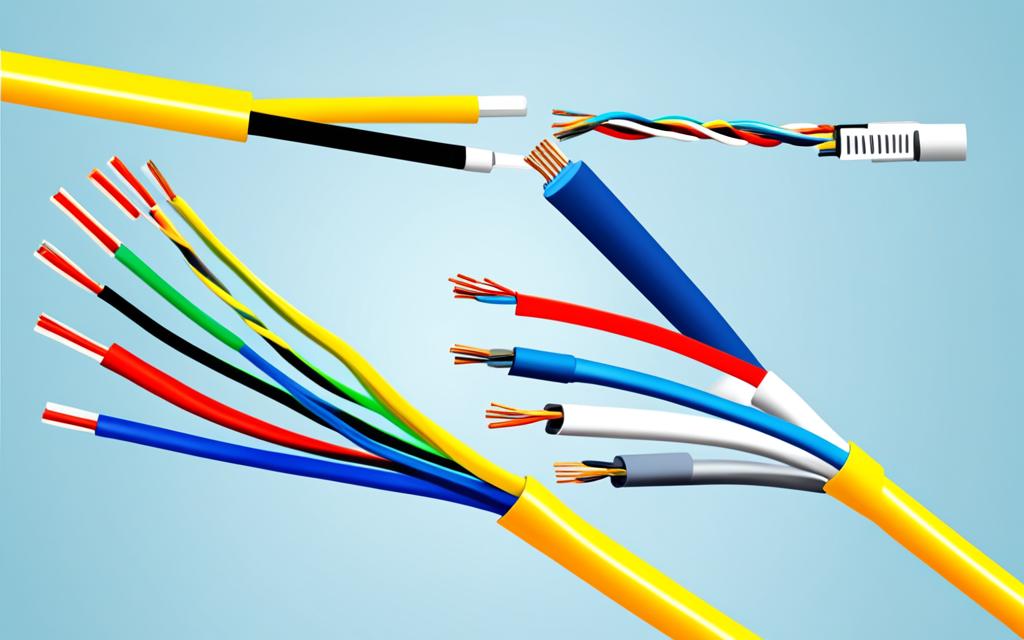
Difference between UTP and STP
When it comes to selecting the right twisted pair cable for your multimedia applications, understanding the difference between UTP (Unshielded Twisted Pair) and STP (Shielded Twisted Pair) is essential. Both UTP and STP cables are widely used in LANs, telephone wires, and Ethernet cables, but they have distinct features and benefits.
UTP Cables
UTP cables consist of four pairs of eight color-coded copper wires twisted together. These cables rely on the cancellation effect, where the electromagnetic interference from external sources cancels out in the twisted pairs, reducing noise and signal degradation. UTP cables provide cost-effectiveness and lighter weight compared to STP cables. They are commonly used in various applications where lower speeds are required.
STP Cables
On the other hand, STP cables also have four pairs of twisted pair cables, but they are enclosed in an additional mesh shield. This shield provides an extra layer of protection against electromagnetic interference and eliminates crosstalk between adjacent pairs. STP cables offer better noise immunity and support higher speeds compared to UTP cables. However, they are more expensive and bulkier in size.
| UTP Cables | STP Cables | |
|---|---|---|
| Construction | Four pairs of twisted copper wires | Four pairs of twisted copper wires with an additional mesh shield |
| Benefits | – Cost-effective – Lighter weight – Suitable for lower speeds |
– Better noise immunity – Support higher speeds – Enhanced interference protection |
| Drawbacks | – Less protection against EMI and crosstalk – Limited speed capabilities |
– More expensive – Bulkier in size |
| Common Applications | – LANs – Telephone wires – Ethernet cables |
– High-speed data transmission – Environments with high electromagnetic interference |
Ultimately, the choice between UTP and STP cables depends on your specific requirements. If you prioritize cost-effectiveness and lighter weight for applications with lower speeds, UTP cables are a suitable option. On the other hand, if you require better noise immunity and support for higher speeds in environments with high electromagnetic interference, STP cables are the ideal choice.
Twisted Pair Cable vs. Coaxial Cable
Twisted pair cables and coaxial cables are both commonly used for transmitting signals in multimedia applications. While they serve similar purposes, there are fundamental differences between the two.
Twisted pair cables consist of pairs of insulated copper wires twisted together. These cables are thinner, less expensive, and easier to install compared to coaxial cables. They are widely used in LANs and Ethernet networks due to their ability to reduce electromagnetic interference and crosstalk.
On the other hand, coaxial cables have a central conductor surrounded by insulation, a metallic shield, and an outer insulating layer. Coaxial cables offer better shielding and can support higher bandwidth compared to twisted pair cables. They are commonly used for cable television and internet connections, as they can carry high-frequency signals over longer distances without interference.
Comparing Twisted Pair Cable and Coaxial Cable
| Twisted Pair Cable | Coaxial Cable |
|---|---|
| Consists of pairs of twisted copper wires | Has a central conductor surrounded by insulation, a metallic shield, and an outer insulating layer |
| Thinner, less expensive, and easier to install | Bulkier, more expensive, and can be more challenging to install |
| Reduces electromagnetic interference and crosstalk | Offers better shielding and higher bandwidth |
| Commonly used in LANs and Ethernet networks | Commonly used for cable television and internet connections |
Ultimately, the choice between twisted pair cables and coaxial cables depends on the specific requirements of the multimedia application. Twisted pair cables are suitable for applications where reduced interference and cost-effectiveness are crucial, such as LANs and Ethernet networks. On the other hand, coaxial cables excel in scenarios that demand better shielding and higher bandwidth, such as cable television and internet connections.
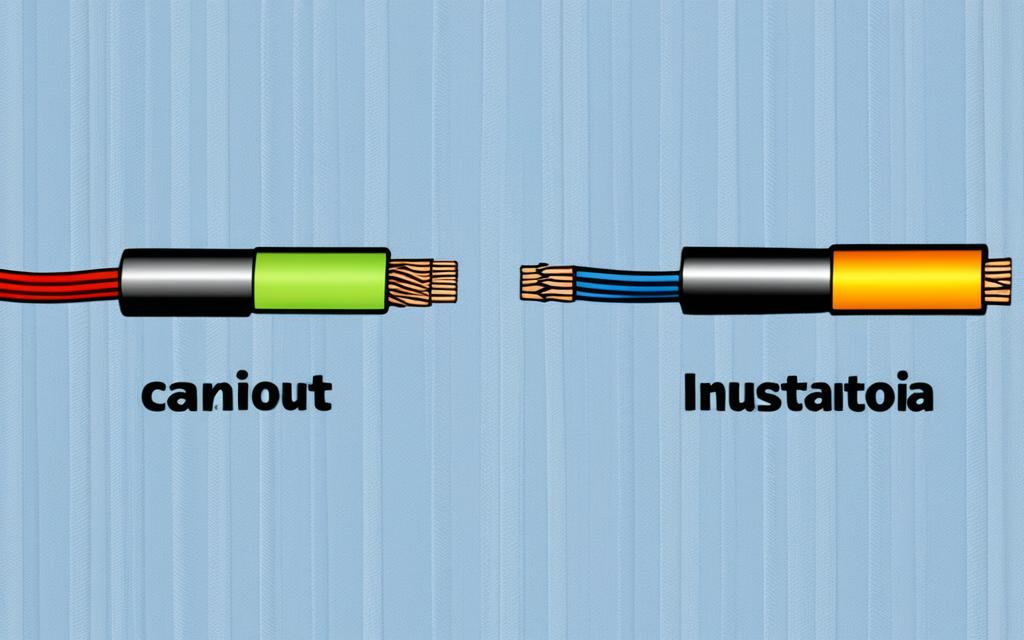
With a solid understanding of the differences between twisted pair cables and coaxial cables, you can choose the appropriate type of cable for your multimedia applications, ensuring optimal performance and reliable signal transmission.
Conclusion
Twisted pair cables are indispensable in today’s multimedia applications, serving as a crucial component for reliable connectivity and efficient transmission of audio, video, and data signals. These cables find widespread use in LANs, Ethernet networks, telephone lines, and security camera systems, delivering seamless connectivity and exceptional performance.
Available in various categories, twisted pair cables offer different data transmission speeds to cater to the diverse demands of modern multimedia applications. Whether it’s lower-speed applications like telephone lines or high-speed requirements in sophisticated LANs, there’s a twisted pair cable category suitable for every need.
When it comes to choosing between unshielded twisted pair (UTP) cables and shielded twisted pair (STP) cables, decision-making should be based on the specific requirements of the application. UTP cables are more cost-effective, lighter in weight, and an excellent choice for applications with lower speeds. STP cables, although more expensive, provide superior noise immunity and are capable of supporting higher speeds.
In a nutshell, the importance of twisted pair cables in multimedia applications cannot be overstated. They offer a reliable, efficient, and flexible solution for transmitting audio, video, and data signals. Whether it’s establishing LAN connections, setting up Ethernet networks, or ensuring seamless communication over telephone lines, twisted pair cables are the go-to choice for enhancing connectivity and performance in a wide range of multimedia applications.
FAQ
What is a twisted pair cable?
A twisted pair cable consists of pairs of insulated copper wires that are twisted together to reduce electromagnetic interference and crosstalk.
What are the uses of twisted pair cables in multimedia applications?
Twisted pair cables are commonly used in LANs, Ethernet networks, DSL lines, telephone lines, and security camera systems for reliable and efficient data transmission.
What are the different categories of twisted pair cables?
Twisted pair cables come in different categories such as Cat5e, Cat6, Cat6A, and Cat8, each offering different data transmission speeds.
What is the difference between UTP and STP cables?
UTP (Unshielded Twisted Pair) cables rely on the cancellation effect to reduce noise, while STP (Shielded Twisted Pair) cables have an additional mesh shield for better noise immunity and crosstalk elimination.
What is the difference between twisted pair cables and coaxial cables?
Twisted pair cables consist of pairs of twisted copper wires, while coaxial cables have a central conductor surrounded by insulation and a metallic shield. Coaxial cables offer better shielding and higher bandwidth, while twisted pair cables are thinner, less expensive, and easier to install.



